Red Coondoo, Spanish cherry, Star flower tree
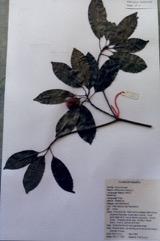
A tropical plant. It suits the hot tropical lowlands. It is native in Asia from India to the Pacific. Plants need well-drained soils. It grows naturally in coastal monsoon vine forests. It will grow on a range of soils. It is often on sand dunes and cliffs near the beach. In tropical Australia it grows from sea level to 320 m altitude. It is drought resistant. Plants need a sunny position. Plants are damaged by frost. It suits hardiness zones 10-12. In XTBG Yunnan.
Also known as:
Alagu, Baagaalu, Bacul, Bakul, Bakula, Bansalagin, Barsoli, Boal, Bokulo baula, Bolsari, Brazilian milktree, Bukul, Bullet wood, Bunga mengkula, Bunga tanjong, Bunga tanjung, Djungun, Elengi, Gokul, Ilanji, Ilanni, Indian medlar, Joongena, Kabiki, Khayay, Kun, Magadam, Magil, Mahilam, Mailsari, Makil, Malshree, Mamajen, Massor, Maulsari, Moghadum, Molsari, Moonimaa, Munamal, Ovalli, Pagade, Phi-khuun, Pi kun, Pigul, Pikul, Pogada, Poghada, Pokok tanjong, Renje hannu, Sen cat, Sen xanh, Tanjong, Tanjung, Thitcho-khaya, Vagulam, Vegalam, Walara, Yawurlama
Synonyms
- Mimusops browniana Benth.
- Mimusops parvifolia R. Br.
- Mimusops elengi var. parvifolia (R. Brown) H.J. Lam
Edible Portion
- Fruit, Seeds - oil
Where does Red Coondoo grow?
Found in: Africa, Andamans, Asia, Australia, Bangladesh, Central America, China, East Africa, East Timor, Fiji, Ghana, Hawaii, Himalayas, India, Indochina, Indonesia, Laos, Malaysia, Maldives, Mauritius, Mozambique, Myanmar, New Caledonia, North America, Northeastern India, Pacific, Pakistan, Panama, Papua New Guinea, PNG, Philippines, Reunion, SE Asia, Solomon Islands, Southern Africa, Sri Lanka, Tanzania, Thailand, Timor-Leste, United States, Vanuatu, Vietnam, West Africa
Notes: There are 55 Mimusops species. An oil is produced from the seeds.
Growing Red Coondoo, Spanish cherry, Star flower tree
Cultivation: Plants can be grown from seed. The seed should be sown fresh. They germinate in 6-14 days. They can be transplanted when the first true leaf appears. They can stand pruning.
Edible Uses: Ripe fruit are eaten raw. They can be used in preserves or pickles. The kernels yield a fatty oil which can be used for edible purposes. It is used in cooking. The bark is used in the distillation of arrack. The nectar from the flowers is used to prepare wine.
Production: Plants are slow growing. In Australia, plants flower in November to January and fruit from April to June. A tree may yield 10 kg of fruit.
Nutrition Info
per 100g edible portion| Edible Part | Energy (kcal) | Protein (g) | Iron (mg) | Vitamin A (ug) | Vitamin c (mg) | Zinc (mg) | % Water |
|---|---|---|---|---|---|---|---|
| Fruit | 197 | 2.9 | - | - | 223 | - | 46.6 |
| Fruit | 91 | 1.3 | 0.6 | - | 3.3 | - | 79.3 |
Red Coondoo, Spanish cherry, Star flower tree Photos

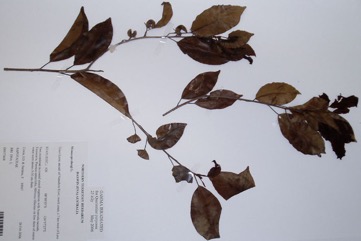
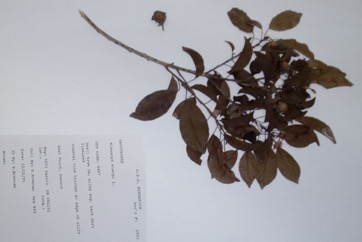
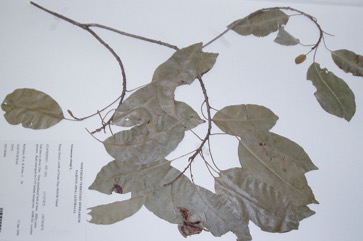
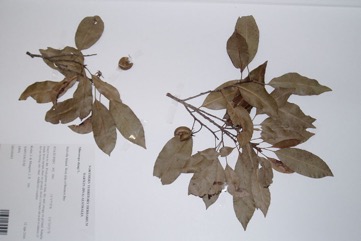
References
Ajesh, T. P., et al, 2012, Ethnobotanical Documentation of Wild Edible Fruits used by Muthuvan Tribes of Idukki, Kerala-India. International Journal of Pharma and Bio Sciences 3(3): 479-487
Ambasta, S.P. (Ed.), 2000, The Useful Plants of India. CSIR India. p 375
Arinathan, V., et al, 2007, Wild edibles used by Palliyars of the western Ghats, Tamil Nadu. Indian Journal of Traditional Knowledge. 6(1) pp 163-168
Arora, K., Indigenous Forest Management in the Andaman and Nicobar Islands, India.
Ashton, M. S., et al 1997, A Field Guide to the Common Trees and Shrubs of Sri Lanka. WHT Publications Ltd. pdf p 363
Bajpai, O., et al, 2015, Tree species of the Himalayan Terai region of Uttar Pradesh, India: a checklist. Check List 11(4): 1718
Bandyopadhyay, S., et al, 2012, A Census of Wild Edible Plants from Howrah District, West Bengal, India. Proceedings of UGC sponsored National Seminar 2012
Barwick, M., 2004, Tropical and Subtropical Trees. A Worldwide Encyclopedic Guide. Thames and Hudson p 279
Beasley, J., 2011, Plants of Tropical North Queensland - the compact guide. Footloose publications. p 25
Bindon, P., 1996, Useful Bush Plants. Western Australian Museum. p 180
Bole, P.V., & Yaghani, Y., 1985, Field Guide to the Common Trees of India. OUP p 9
Bremness, L., 1994, Herbs. Collins Eyewitness Handbooks. Harper Collins. p 66
Brock, J., 1993, Native Plants of Northern Australia, Reed. p 259
Burkill, I.H., 1966, A Dictionary of the Economic Products of the Malay Peninsula. Ministry of Agriculture and Cooperatives, Kuala Lumpur, Malaysia. Vol 2 (I-Z) p 1500
Chandrakumar, P., et al, 2015, Ethnobotanical studies of wild edible plants of Gond, Halba and Kawar tribes of Salekasa Taluka, Gondia District, Maharashtra State, India. International Research Journal of Pharmacy 6(8)
Chandrashekara, U. M., 2009, Tree species yielding edible fruit in the coffee-based homegardens of Kerala, India: their diversity, uses and management. Food Sec. 1:361-370
Cherikoff V. & Isaacs, J., The Bush Food Handbook. How to gather, grow, process and cook Australian Wild Foods. Ti Tree Press, Australia p 200
Cooper W & Cooper W T, 1994, Fruits of the Rain Forest. RD Press p 192
Cooper, W. and Cooper, W., 2004, Fruits of the Australian Tropical Rainforest. Nokomis Editions, Victoria, Australia. p 506
Coronel, R.E., 1982, Fruit Collections in the Philippines. IBPGR Newsletter p 10
Cowie, I, 2006, A Survey of Flora and vegetation of the proposed Jaco-Tutuala-Lore National Park. Timor-Lests (East Timor) www.territorystories.nt/gov.au p 52
Crawford, I. M., 1982, Traditional Aboriginal Plant Resources in the Kalumburu Area: Aspects in Ethno-economics. Records of the Western Australian Museum Supplement No. 15
Cribb, A.B. & J.W., 1976, Wild Food in Australia, Fontana. p 42
Dobriyal, M. J. R. & Dobriyal, R., 2014, Non Wood Forest Produce an Option for Ethnic Food and Nutritional Security in India. Int. J. of Usuf. Mngt. 15(1):17-37
Elliot, W.R., & Jones, D.L., 1993, Encyclopedia of Australian Plants suitable for cultivation. Vol 6. Lothian. p 422 (Drawing)
Engel, D.H., & Phummai, S., 2000, A Field Guide to Tropical Plants of Asia. Timber Press. p 50
Etherington, K., & Imwold, D., (Eds), 2001, Botanica's Trees & Shrubs. The illustrated A-Z of over 8500 trees and shrubs. Random House, Australia. p 481
Facciola, S., 1998, Cornucopia 2: a Source Book of Edible Plants. Kampong Publications, p 227
Flora of Pakistan. www.eFloras.org
Flowerdew, B., 2000, Complete Fruit Book. Kyle Cathie Ltd., London. p 163
Flora and Livestock in Coastal Karnataka. 2007, Report. EMPRI p 173
Food Composition Tables for use in East Asia FAO http://www.fao.org/infoods/directory No. 832
Hedrick, U.P., 1919, (Ed.), Sturtevant's edible plants of the world. p 415
Hibbert, M., 2002, The Aussie Plant Finder 2002, Florilegium. p 197
INFOODS:FAO/INFOODS Databases
Jackes, B.R., 2001, Plants of the Tropics. Rainforest to Heath. An Identification Guide. James Cook University. p 81
Jadhav, R., et al, 2015, Forest Foods of Northern Western Ghats: Mode of Consumption, Nutrition and Availability. Asian Agri-History Vol. 19, No. 4: 293-317
Jones D, L, 1986, Ornamental Rainforest Plants in Australia, Reed Books, p 228, 340
Kenneally, K.E., Edinger, D. C., and Willing T., 1996, Broome and Beyond, Plants and People of the Dampier Peninsula, Kimberley, Western Australia. Department of Conservation and Land Management. p 181
Khan, D. & Shaukat, S.S., 2006, The Fruits of Pakistan: Diversity, Distribution, Trends of Production and Use. Int. J. Biol. Biotech., 3(3):463-499
Kiple, K.F. & Ornelas, K.C., (eds), 2000, The Cambridge World History of Food. CUP p 1814
Krishen P., 2006, Trees of Delhi, A Field Guide. DK Books. p 48
Lemmens, R.H.M.J., 2005. Mimusops elengi L. [Internet] Record from Protabase. Louppe, D., Oteng-Amoako, A.A. & Brink, M. (Editors). PROTA (Plant Resources of Tropical Africa), Wageningen, Netherlands. < http://database.prota.org/search.htm>. Accessed 19 October 2009.
Low, T., 1991, Wild Food Plants of Australia. Australian Nature FieldGuide, Angus & Robertson. p 39
Macmillan, H.F. (Revised Barlow, H.S., et al) 1991, Tropical Planting and Gardening. Sixth edition. Malayan Nature Society. Kuala Lumpur. p 304
Martin, F. W., et al, 1987, Perennial Edible Fruits of the Tropics. USDA Handbook 642 p 60
McMakin, P.D., 2000, Flowering Plants of Thailand. A Field Guide. White Lotus. p 35
Nazarudeen, A., 2010, Nutritional composition of some lesser-known fruits used by the ethnic communities and local folks of Kerala. Indian Journal or Traditional Knowledge. Vol. 9(2): 398-402
Paczkowska, G . & Chapman, A.R., 2000, The Western Australian Flora. A Descriptive Calatogue. Western Australian Herbarium. p 530
Pasha, M. K. & Uddin, S. B., 2019, Minor Edible Fruits of Bangladesh. Bangladesh J. Plant Taxon. 26(2): 299–313
Patiri, B. & Borah, A., 2007, Wild Edible Plants of Assam. Geethaki Publishers. p 79
Paul, A., 2013, Minor and uncultivated fruits of Eastern India, 2nd International Symposium on Minor Fruits and Medicinal Plants
Pham-Hoang Ho, 1999, An Illustrated Flora of Vietnam. Nha Xuat Ban Tre. p 631
Pilz, G. E., 1981, Sapotaceae of Panama. Annals of Missouri Botanical Garden. Vol. 68. No. 1 p 177
Pullaiah, Y., Krishnamurthy, K. V. & Bahadur, B. (Eds.), 2016, Ethnobotany of India, Volume 1: Eastern Ghats and Deccan.
Rajapaksha, U., 1998, Traditional Food Plants in Sri Lanka. HARTI, Sri Lanka. p 466
Reddy, K. N. et al, 2007, Traditional knowledge on wild food plants in Andhra Pradesh. Indian Journal of Traditional Knowledge. Vol. 6(1): 223-229
Selvam, V., 2007, Trees and shrubs of the Maldives. RAP Publication No. 2007/12 p 114
SHORTT,
Singh, H.B., Arora R.K.,1978, Wild edible Plants of India. Indian Council of Agricultural Research, New Delhi. p 67
Smith, A.C., 1981, Flora Vitiensis Nova, Lawaii, Kuai, Hawaii, Volume 2 p 781
Smith, M & Kalotas, A. C., 1985, Bardi Plants: An Annotated List of Plants and Their Use by the Bardi Aborigines of Dampierland, in North-western Australia. Rec. West Aust. Mus. 1985, 12(3): 317-359
Sp. pl. 1:349. 1753
Sosef, M. S. M., Hong, L. T., & Prawirohatmodjo, S. (Eds.), 1998, Timber tree: Lesser-known timbers. Plant Resources of South-East Asia, 5(3), p 382
Staples, G.W. and Herbst, D.R., 2005, A tropical Garden Flora. Bishop Museum Press, Honolulu, Hawaii. p 520
Sujanapal, P., & Sankaran, K. V., 2016, Common Plants of Maldives. FAO & Kerala FRI, p 176
Sukarya, D. G., (Ed.) 2013, 3,500 Plant Species of the Botanic Gardens of Indonesia. LIPI p 399
Swaminathan, M.S., and Kochnar, S.L., 2007, An Atlas of Major Flowering Trees in India. Macmillan. p 176
Tanaka,
Thaman, R. and W. Clarke, Paper on Agroforestry on Aneityum and Tanna, Vanuatu from Internet
Tiwi Plants and Animals. 2001, Aboriginal flora and fauna knowledge from Bathurst and Melville Islands, northern Australia. Northern Territory Botanical Bulletin; No. 24 p 67
Townsend, K., 1994, Across the Top. Gardening with Australian Plants in the tropics. Society for Growing Australian Plants, Townsville Branch Inc. p 299
Townsend, K., 1999, Field Guide to Plants of the Dry Tropics. Society for Growing Australian Plants, Townsville Branch Inc. p 72
Triono, T., et al, 2007, A phylogeny of Pouteria (Sapotaceae) from Malesia and Australasia. Australian. Systematic Botany. 20:107-118
van Wyk, B., 2005, Food Plants of the World. An illustrated guide. Timber press. p 242
Ravikrishna, S., 2011, Ethno-medico-botanical survey on Wild Edible fruits of Udupi Taluq, Udupi p 86
Venter, F & J., 2009, Making the most of Indigenous Trees. Briza. p 212
Vigilante, T., et al, 2013, Island country: Aboriginal connections, values and knowledge of the Western Kimberley islands in the context of an island biological survey. Records of the Western Australian Museum Supplement 81: 145-182
Walter, A. & Sam C., 2002, Fruits of Oceania. ACIAR Monograph No. 85. Canberra. p 283
WATT,
Wheeler, J.R.(ed.), 1992, Flora of the Kimberley Region. CALM, Western Australian Herbarium, p 268
World Checklist of Useful Plant Species 2020. Royal Botanic Gardens, Kew
Yesodharan, K. & Sujana, K. A., 2007, Wild edible plants traditionally used by the tribes in the Parambokulam Wildlife Sanctuary, Kerala, India. Natural Product Radiance 6(1) pp 74-80
Yunupinu Banjgul, Laklak Yunupinu-Marika, et al. 1995, Rirratjinu Ethnobotany: Aboriginal Plant Use from Yirrkala, Arnhem Land, Australia. Northern Territory Botanical Bulletin No 21. Parks and Wildlife Commission of the Northern Territory. p 57